Abstract
In an apomictic strain of Saccharomyces cerevisiae that normally produces two-spored asci, production of three and four-spored asci was restored by adjusting zinc and carbon source levels in presporulation and sporulation media. Sporogenic capability was compared after growth in defined and undefined presporulation environments. Cultivation in defined presporulation medium containing 6% glucose followed by sporulation in 3.5% acetate yielded 16 ± 3% three- and four-spored asci. Inclusion of 25 μg of zinc sulfate per ml in presporulation medium or 25 μg of zinc acetate per ml in sporulation medium gave a further increase in yield of three- and four-spored asci; it reached 48 ± 1% when zinc was added to both media. Cells grown in undefined presporulation medium were incapable of three- and four-spored ascus development in acetate sporulation medium unless zinc was included in the latter medium. Cultivation in defined presporulation medium amended with yeast extract, peptone, or casein hydrolysate greatly reduced three- and four-spored ascus yields. Inclusion of a meiotic inhibitor (glucose) in sporulation medium inhibited three- and four-spored ascus production but not two-spored ascus production. Nuclear staining demonstrated two classes of asci: binucleate (one and two spored) and tetranucleate (three and four spored). Hence, some control over apomictic versus normal ascus development has been gained by nutritional manipulation.
Full text
PDF
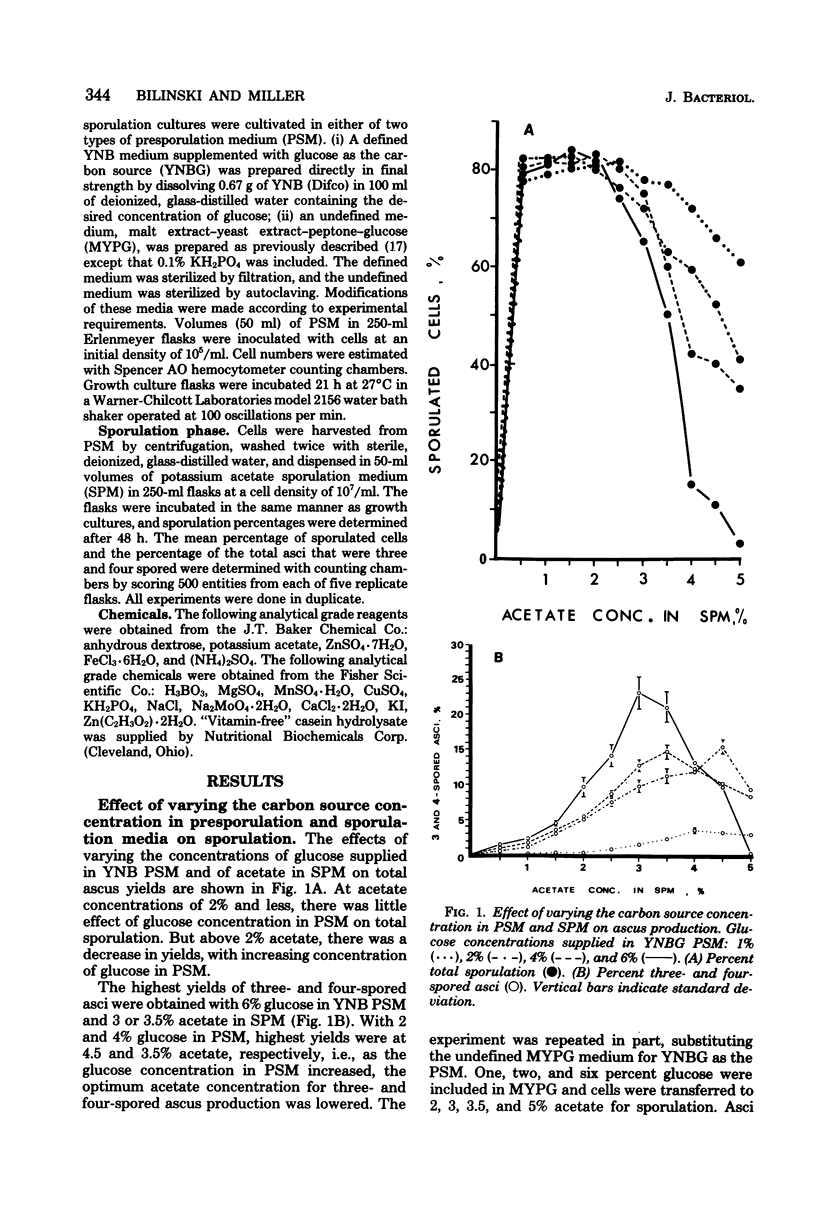
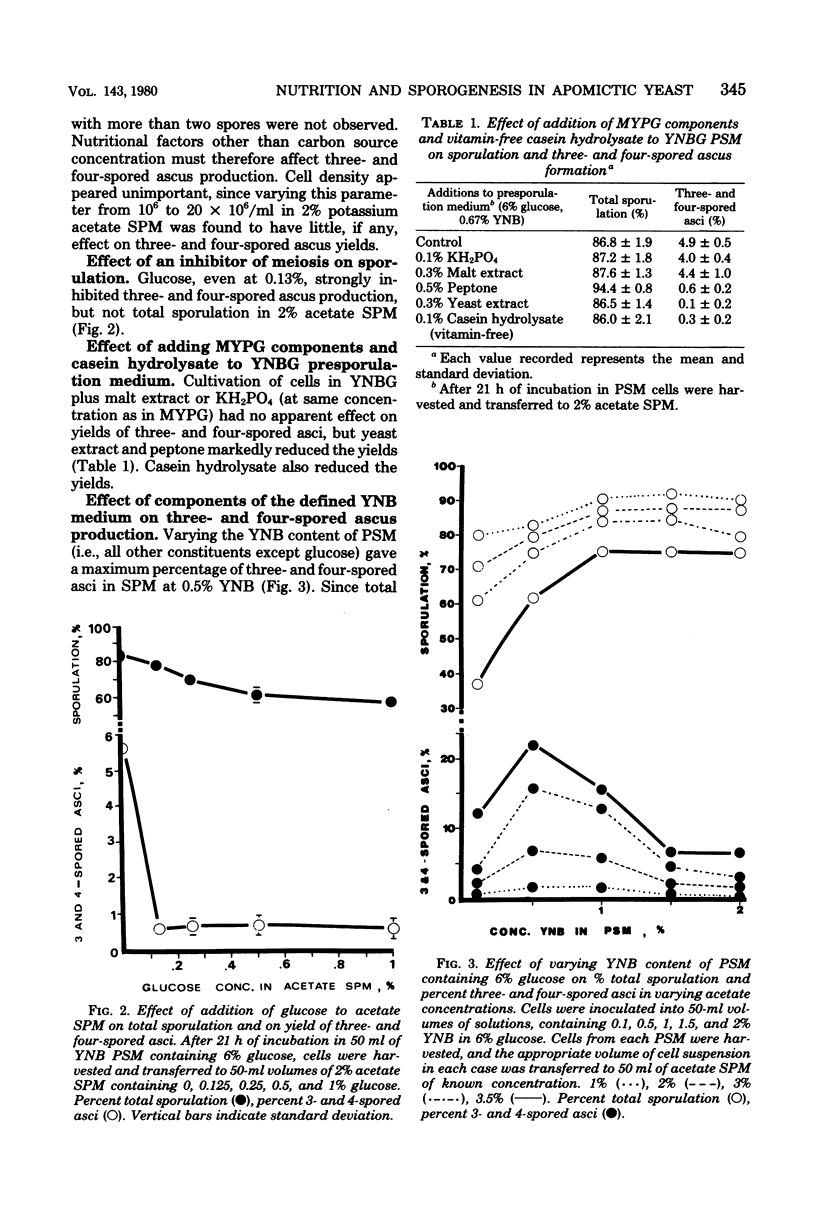
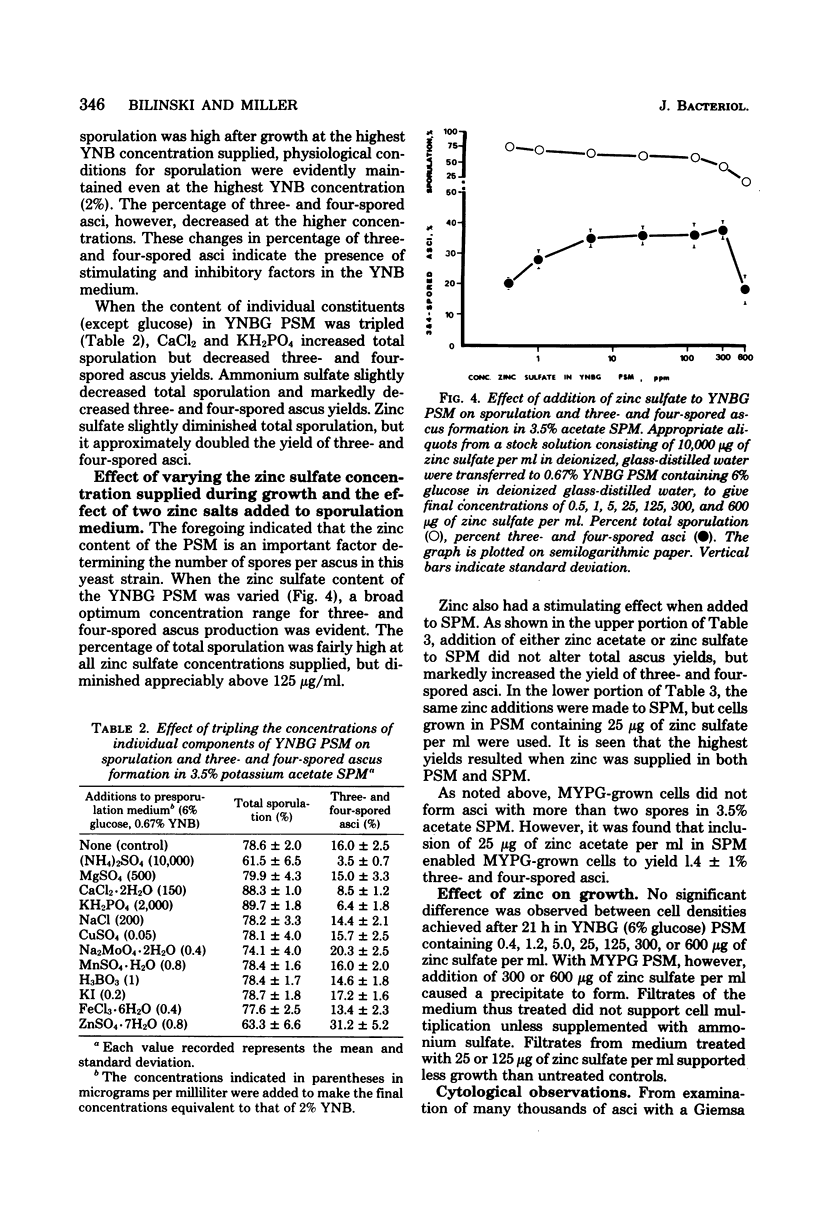
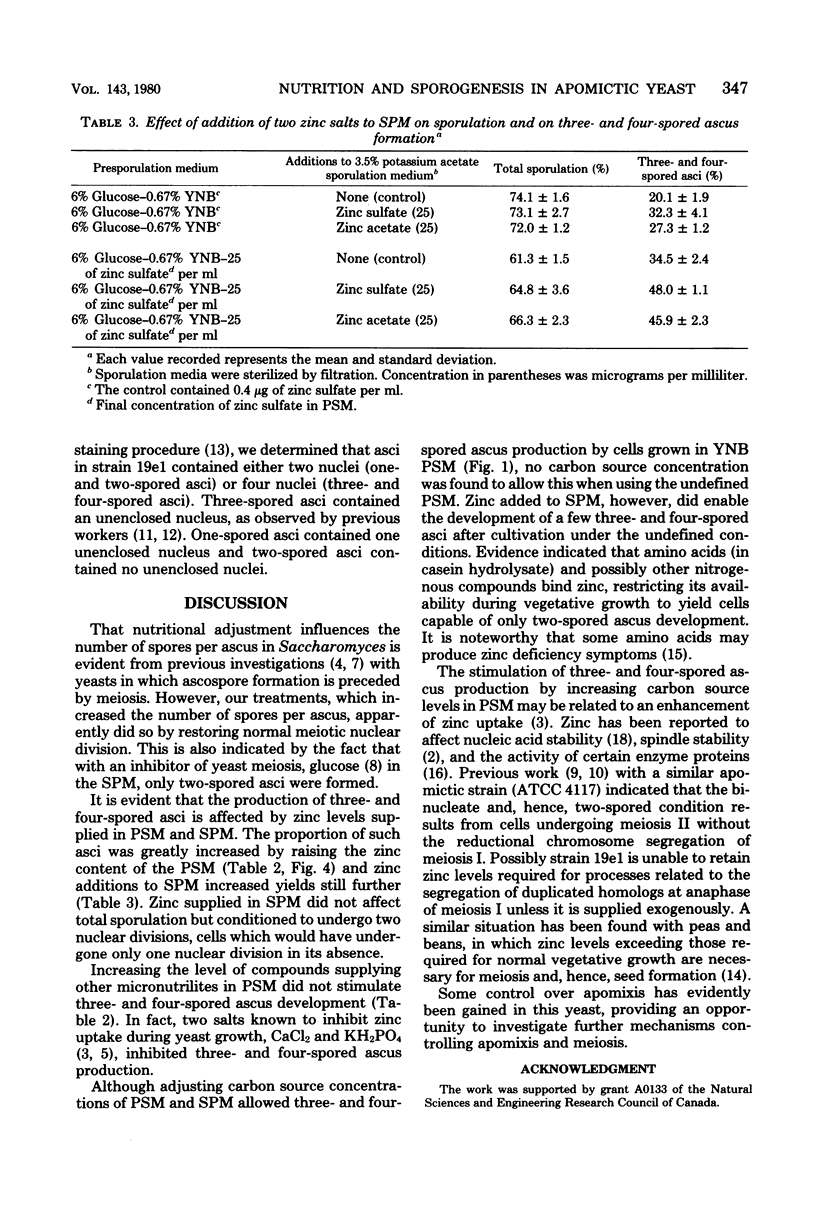
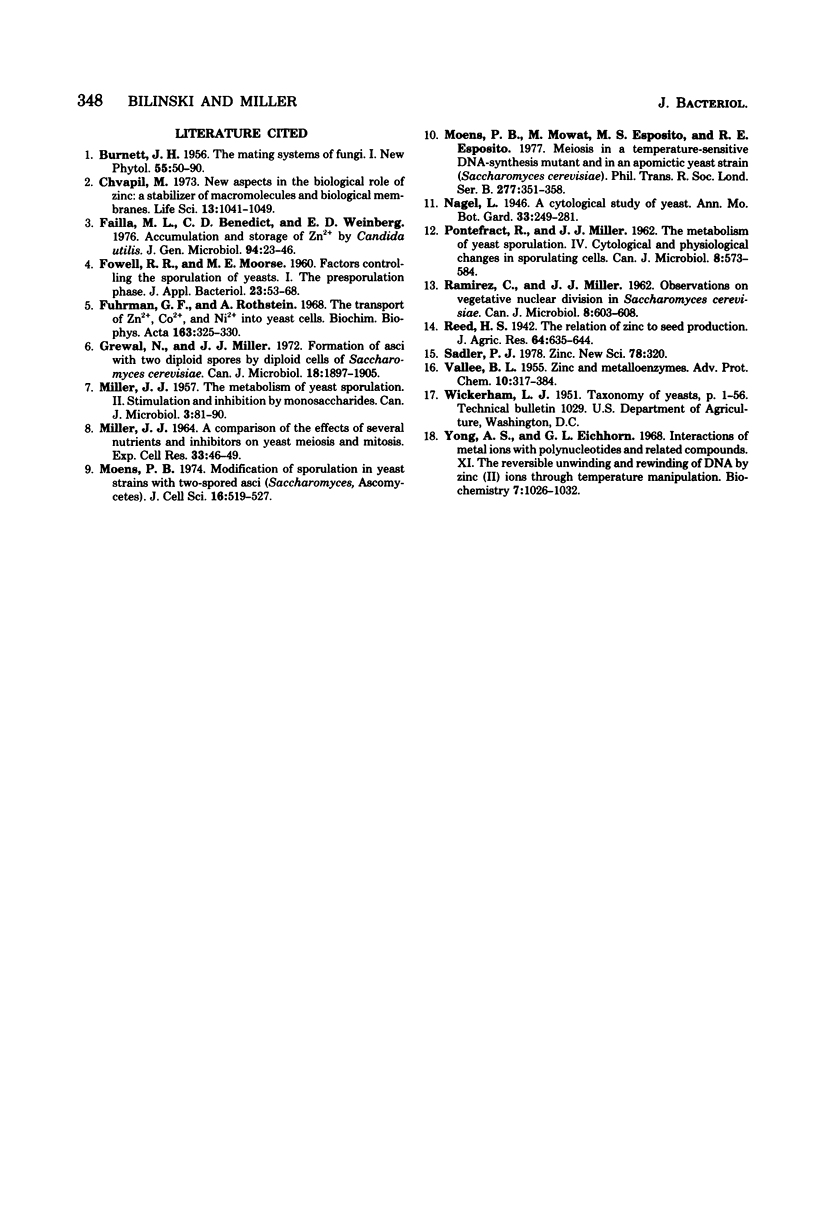
Selected References
These references are in PubMed. This may not be the complete list of references from this article.
- Chvapil M. New aspects in the biological role of zinc: a stabilizer of macromolecules and biological membranes. Life Sci. 1973 Oct 16;13(8):1041–1049. doi: 10.1016/0024-3205(73)90372-x. [DOI] [PubMed] [Google Scholar]
- Failla M. L., Benedict C. D., Weinberg E. D. Accumulation and storage of Zn2+ by Candida utilis. J Gen Microbiol. 1976 May;94(1):23–36. doi: 10.1099/00221287-94-1-23. [DOI] [PubMed] [Google Scholar]
- Fuhrmann G. F., Rothstein A. The transport of Zn2+, Co2+ and Ni2+ into yeast cells. Biochim Biophys Acta. 1968 Nov 5;163(3):325–330. doi: 10.1016/0005-2736(68)90117-x. [DOI] [PubMed] [Google Scholar]
- Grewal N. S., Miller J. J. Formation of asci with two diploid spores by diploid cells of Saccharomyces. Can J Microbiol. 1972 Dec;18(12):1897–1905. doi: 10.1139/m72-295. [DOI] [PubMed] [Google Scholar]
- MILLER J. J. A COMPARISON OF THE EFFECTS OF SEVERAL NUTRIENTS AND INHIBITORS ON YEAST MEIOSIS AND MITOSIS. Exp Cell Res. 1964 Jan;33:46–49. doi: 10.1016/s0014-4827(64)81010-7. [DOI] [PubMed] [Google Scholar]
- MILLER J. J. The metabolism of yeast sporulation. II. Stimulation and inhibition by monosaccharides. Can J Microbiol. 1957 Feb;3(1):81–90. doi: 10.1139/m57-010. [DOI] [PubMed] [Google Scholar]
- Moens P. B. Modification of sporulation in yeast strains with two-spored asci (Saccharomyces, Ascomycetes). J Cell Sci. 1974 Dec;16(3):519–527. doi: 10.1242/jcs.16.3.519. [DOI] [PubMed] [Google Scholar]
- Moens P. B., Mowat M., Esposito M. S., Esposito R. E. Meiosis in a temperature-sensitive DNA-synthesis mutant and in an apomictic yeast strain (Saccharomyces cerevisiae). Philos Trans R Soc Lond B Biol Sci. 1977 Mar 21;277(955):351–358. doi: 10.1098/rstb.1977.0023. [DOI] [PubMed] [Google Scholar]
- Shin Y. A., Eichhorn G. L. Interactions of metal ions with polynucleotides and related compounds. XI. The reversible unwinding and rewinding of deoxyribonucleic acid by zinc (II) Ions through temperature manipulation. Biochemistry. 1968 Mar;7(3):1026–1032. doi: 10.1021/bi00843a022. [DOI] [PubMed] [Google Scholar]
- VALLEE B. L. Zinc and metalloenzymes. Adv Protein Chem. 1955;10:317–384. doi: 10.1016/s0065-3233(08)60108-4. [DOI] [PubMed] [Google Scholar]


